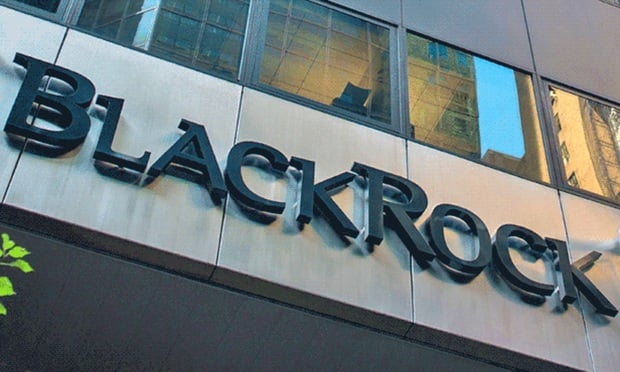Ask anyone who's worked in an open office and you'll learn two things with absolute certainty: 1) it's the best thing in the world since sliced bread; 2) it's not.
"I hate them. I hate them with a vengeance," said a mid-level manager who prefers to remain unnamed because he sees no point in antagonizing the hand that feeds him.
Organizational psychologists say open offices can be damaging to worker's productivity, attention spans, creative thinking and overall satisfaction.
Recommended For You
The noise pollution level in open office environments is especially high, meaning it can be harder for workers to concentrate on their tasks.
A study by Cornell University found exposure to high levels of noise in the workplace can trigger increased levels of epinephrine, the hormone involved in the fight-or-flight response.
Of course, there are still plenty of fans of open floor plans.
"We're an architectural firm of 20 employees, and we don't have a single private office," said Sara Herman, vice president and director of interior design at SVPA Architects, in Des Moines, Iowa.
"We're working together all the time, and if I happen to overhear somebody struggling with a problem I've dealt with before, I can jump in and save them some time. We have a lot of these 'by chance conversations,' and for the most part, they're very productive."
Briefly, for the impossible-to-imagine uninitiated, the open office configuration places everyone at desks or tables in a large space with no walls or dividers between workers.
Everyone can see and hear what's going on around them among peers, managers, and sometimes even top executives.
Many open designs include various nooks and crannies with sofas, white boards, and large tables for both impromptu and scheduled gatherings. There's often a glass-walled conference room for meetings that require aural if not visual discretion.
Some open plans have private offices on the perimeter, though they're usually shared by two or three employees.
And even the most vitriolic open office haters have to admit: the designs are cool. Way cool: primary colors, kooky artwork, structural elements of the building left skeletal and bare.
All in the name of … productivity.
The belief that collaborative environments increase productivity is so pervasive that some 70 percent of all U.S. workspaces are open office plans, according to a 2010 report conducted by the Houston-based International Facility Management Association.
The late Steve Jobs, who had tremendous faith in the power of collaboration and chance meetings, devised perhaps the simplest way to encourage serendipity in his Pixar Animation Studios. When the facility was built, its huge open-space atrium contained the only restrooms on the entire Emeryville, Calif., campus.
 However, one person's collaborative environment is just another's person's noise and distraction. In a recent Fast Company article, editors Anjali Mullany and Jason Feifer discussed why they love (Anjali) and hate (Jason) "the large open air pit" where their desks are located. Their views are typical of many workers who toil in open offices.
However, one person's collaborative environment is just another's person's noise and distraction. In a recent Fast Company article, editors Anjali Mullany and Jason Feifer discussed why they love (Anjali) and hate (Jason) "the large open air pit" where their desks are located. Their views are typical of many workers who toil in open offices.
Anjali appreciates how the lack of barriers encourages easier and more spontaneous communications among team members. Quick exchanges of information are no longer relegated to e-mails and instant messages that may or may not be answered in a timely manner, and actual conversations with productive outcomes can occur at a moment's notice.
For Jason, all that spontaneity and chatter 20 feet away from his desk simply adds up to a lack of privacy, unwanted distraction, inability to concentrate, and a feeling that his space belongs to anyone who feels like invading it.
Because co-workers sit closer together with few barriers, Anjali appreciates the ease of interaction with colleagues whom she might not otherwise talk to, which has led to new projects and new collaborations that have made her "happier and less isolated at work."
Not so for Jason, who observes that headphones clamped firmly over the ears are the only way to signal "do not disturb" to co-workers, and even that often fails to dissuade the determinedly chatty.
"Because we're sitting together we're doing everything we can to create the sense that we're apart," he writes. "It's incontrovertible proof … that the open-office movement has the opposite of its intended effect."
So who's right? Perhaps ironically, it appears they both are.
A flood of recent academic research seems to support Jason's view that open offices lead to more stress and sick days, less creativity, less concentration, less productivity, less motivation and less job satisfaction. In that light, the field is becoming more nuanced in its approach.
Says SVPA's Herman, "There's no question that open designs aren't for every business. Techs and startups tend to thrive in open environments because they need a loose, collaborative environment.
"Some law firms tried the concept and found it created marketing and recruiting problems. New hires weren't so much concerned about privacy, but they did want an office with a door, a desk, and a window, and chose the firm that provided it.
"Even certain departments within a business shouldn't be forced into an open plan. HR, for example, has some very good reasons for wanting privacy and a more traditional layout."
Robby Slaughter, a principal of Indianapolis-based business-consulting company AccelaWork, said there are several ways to survive the open-space floor plan.
For starters, using noise-blocking headphones or ear buds to listen to music can help, he said.
Also, flex-time and telecommuting are good solutions. If that's not possible, Slaughter advises creating clusters of chairs in office corners or quiet spots where employees can retreat.
Also, hanging a sign asking people not to interrupt might work, though that's something that should be used sparingly.
But what about Anjali's points?
Prior to a major remodel of his organization's headquarters, IMFA spokesman Jed Link said certain departments had a problem with "silo-ing."
Communication and cooperation was great among employees within individual departments, but slow when staff ventured outside their particular silo. "Even e-mails weren't returned quickly," said Link. "We had a particular problem and were able to solve it with an open design."
Like them or loathe them, everybody agrees on one thing about open plans: They're cheaper than traditional offices because more and more people are being fit into less and less space.
A 2010 study conducted by CoreNet Global, a real estate trade organization, found that "the average amount of space per office worker globally has dropped from 225 square feet to 150 square feet, or less.
By 2015," the report projected, "100 square feet or less will be the norm per worker."
It's worth noting, however, that about a third of the respondents in the CoreNet study worried that perhaps things had gone too far and that companies were "over-building collaborative space at the expense of focus work and privacy."
© Touchpoint Markets, All Rights Reserved. Request academic re-use from www.copyright.com. All other uses, submit a request to [email protected]. For more inforrmation visit Asset & Logo Licensing.






